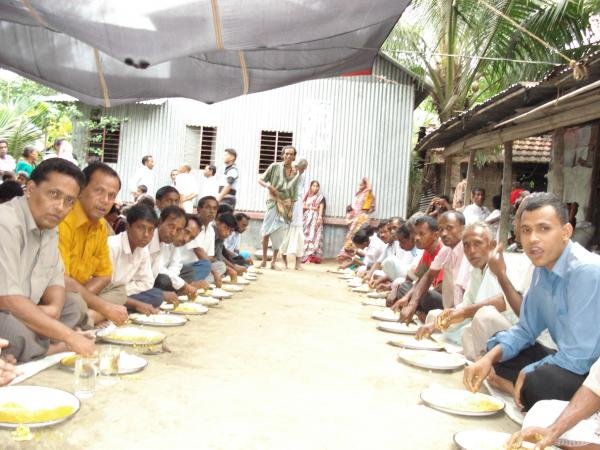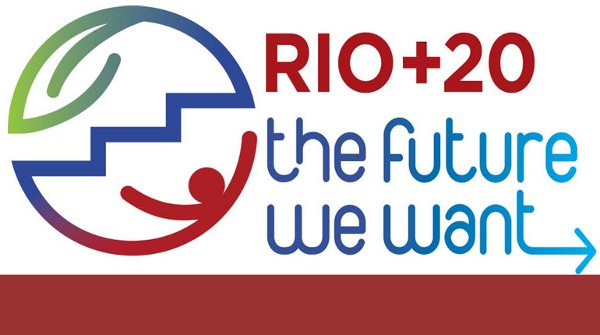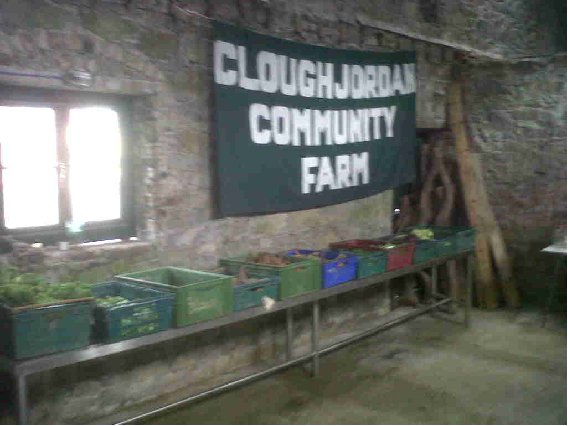For those of us who dream
This is a post from Alejo Etchart Ortiz, a Spanish sustainable development consultant who is now implementing a resilience-building, community approach to sustainable development in small rural areas called RESIVITAS. Here he introduces a vision of a community-based, resilience-building, systemic approach to sustainable development. Alejo also reviews how three of the pre-Rio 20 documents align with this vision of community resilience and comments the feasibility of the approach proposed.
For those of us who dream
For those of us who believe that community living enhances people’s experience of life; who know that systemic resilience is a key ability for our future and that resilience is strongly linked to community living; who know that community living is feasible not only in rural areas or developing regions, but even in Northern cities, although in a lower state; and who want not only to enjoy community living, but, most important, to create replicable models that could be benchmarked in other areas in order to deliver to our kids a livable world, the documents being published before the Earth Summit Rio+20 (20th-22nd June 2012) are a confirmation that we are right.
This post introduces a vision on a community-based, resilience-building systemic approach to sustainable development; then, it reviews how three of the main pre-Rio+20 documents align with it; and finally, it comments how this approach is indeed feasible.
The vision
This vision (‘RESIVITAS’) pursues the realization of a systemic approach through a bottom-up-built social transformation that incorporates the principles of sustainability (as outlined, in Stoddarts’s A Pocket Guide to Sustainable Development Governance) from its grassroots. It is about a development based on a network of sustainable communities at the neighbourhood level that provide themselves with both pro-environmental and not specifically pro-environmental services, from the whole community to its members, peer to peer or from members to the whole community. Community-specific entities with social objectives merge in each community to manage these services, which can be classified, among other ways, in six open-end groups:
- Collective pro-environmental services from the community to its members, either grouped or isolated: distributed energy- generated close to the consumption place, from renewable sources; district heating and cooling solutions combined with CHP plants; optimization of electricity bills through energy saving measures; grey water collection and management; urban agriculture; access to building isolation services, green roofs, vertical gardening and other permaculture practices; composting with bio-residues; re-valuation of books, toys, clothes and shoes, electric, electronic devices and furniture; and others.
- Services without a specific pro-environmental objective delivered from and to people in the community, managed through time banks: care services from young to old people; care and educational services from old to young people or kids; escort and care services to disabled people; public art projects for different groups; courses, including environmental formation to adults; education or consulting from retired professionals to students or young professionals; kids collecting; home cooking services; DIY for home maintenance; specific domestic job services; security provision services.
- Pro-environmental transformation of goods into services, to convert all or part of the following devices (when bought with exceeding capacity for private homes) into new intra-communitarian services: washing machines at home into community laundry services; TV, PCs and multimedia sets into common multimedia rooms; books and shelves into community libraries; particular living room sets into community living spaces
- Services without a specific pro-environmental objective, in the interest of the whole community to foster internal cohesion (zero-carbon economy): concerts, courses and conferences; purchasing groups including assurances, banking and other services; optimization of electricity bills through invoice revisions; children’s gardens; retirement homes; gastronomic societies; shared domestic services.
- Climate Change adaptation services in the interest of the whole community: drainage, retaining walls, shelters for extreme weather-related events.
- Generation of new pro-community business ideas within the context of a New Sustainable Economy (see further below).
A community-specific entity (CSE) is created within each community in order to manage these services within each community. CSEs are social oriented not-for-profit organizations whose eventual profits are invested in the common interest. The objective of CSEs, and of the community-based approach in general, is not the benefit of the communities, but an enhanced life experience of individuals in a way that is compatible with the necessary shift to a sustainable development-compatible path. Community members have interest in their respective communities and get involved to make them progress.
CSEs are promoted from catalyzing consultancies (CC) specialized on the issue that have a wide knowledge of successful partial practices implemented worldwide that can be adapted to new communities and can create self-sustained business models in each community. CSEs make intensive use of the benefits that ICTs can provide to community management. One of the CCs’ tasks is to generate a comprehensive core-system of culturally sensitive training programmes, combining advanced scientific concepts and technology with traditional values, skills, knowledge and muscle-power that exist in each community. Due to the very particular requirements, the wide range of new services and the social mission of CSEs, their leaders receive special training in CSEs networks, where they can share experiences. CSEs’ eventual workers are preferentially community members. CCs generate partially replicable, flexibly designed community-based social business models to be applied globally. Even though the activity of these consultancies is compatible with financial profit, according to the values of RESIVITAS, they should have social orientation.
Traditional companies compete to cooperate for the implementation of CSEs for the different communities, forming joint ventures that gather the different services to be offered to communities. This coopetition fosters a legal, managerial, technical and social innovation.
Communities enhance the space for members to know each other, to give and receive esteem, to flourish, enhancing a positive experience of life. At the same time, having a shared base of material and emotional resources, community members see their exposure to economical, environmental or social unwanted impacts reduced. Thus resilience is increased.
Additionally, material, energy and water consumption, thus pressure over physical resources, is reduced. At the same time, democracy is reinforced as citizens gain voice through their respective communities; and new local jobs are created. This way, communities have the potential to act as the basic unit for promoting a systemic approach to sustainable development. Communities are a manageable development unit that builds development in a bottom-up approach that can be influenced by top-down incentives. This new way of development can proactively be applied worldwide, while remaining essentially driven by local communities.
Emerging socio-economic concepts such as systemic thinking, wellbeing-focused approaches, resilience-building through community-based developments, low-energy societies, and a number of movements around a New Sustainable Economy (including economic re-localization, Green Economy, New Economy 20+20, Economy of the Commons, De-growth, Inclusive Business and Co-management) are reflected and gain sense in RESIVITAS.
RESIVITAS applies systemic development to relatively small groups through a range of globally replicable patterns. It aims at prosperity of individuals based on global wellbeing instead of material abundance. Any shift would require efforts to effect profound changes to the way we live. Nevertheless, RESIVITAS might, at the same time, be compatible with the existing institutional bodies, although it would entail a remarkable re-distribution of power towards more equitable standards. This proposal is therefore a way for civil society to take the lead in the pathway to sustainable development. It is a certainly a challenge to those understandings of sustainable development which proclaim change while leaving untouched the basic structures of the present society.
The name of RESIVITAS might be appropriate for this approach, for it brings to mind the concepts of:
- resilience;
- the Latin civitas, meaning of a body of citizens sharing responsibility, a common purpose, and sense of community; and
- the key syllable RE (standing for Renewable Energy, Reduction, Re-use, Recycle, Re-think, etc).
New contributions
Most of the topics gathered in this vision are hot topics in the development or climate change agendas. None of them are new, and many more community practices can be included, as they are being implemented under Agenda21 approaches and others. The new contributions of this vision are:
-
the systemic approach assumed for facing environmental, social and economic issues; and
-
the community-based social-entrepreneurial solution that appropriates the intrinsic value of the community to deliver a wide and open-end range of resilient building, wellbeing-focused, community-specific services.
RESIVITAS and Rio+20
The Coordination Notes ON THE ROAD TO RIO+20 published by Executive Coordinator to the United Nations Conference on Sustainable Development 2012 (Brice Lalonde) give an excellent overview on the status of the issues to be dealt with in the Earth Summit. Lalonde says that without a driving force nothing will change, and argues that business leaders need to be part of the solution by encouraging experimentation, bringing innovative solutions, invest in R&D and promote sustainable development offshoots and start-ups. Sustainable development entails creative business models such as social service industries, systems of shared resources and products, collaborative ways of consuming, direct trade links from the producer to the consumer, barter economy, second hand markets and recycling industries. Project-by-project approaches may have demonstrable results, but macro approaches are the best way to achieve the major transformations we seek.
Lalonde also demands from Rio+20 concrete action for new models, modernizing SMEs through the use of the Green Economy in three priority areas: social standards, environmental footprint and energy efficiency; and enhancing the social economy sector through cooperatives, community associations, mutual unions, collective institutions in housing, production, health, distribution, etc.
Social entrepreneurship is a new sector that should be recognized and promoted, and Rio+20 should aim to create an implementation-oriented process combining grants and loans; mitigating or sharing risks; facilitating public and private partnerships; bringing in expertise, to match contributions and demand. The demand for sustainable development implementation may be very basic, but it may also provide an opportunity for innovation and new business models. This implementation-oriented process could be critical to the identification of the demand needed by RESIVITAS. Lalonde argues that the demand for sustainable development must be funded through country budgets, sector policy funding, private sector investments and other initiatives. The Social Economy may only thrive with the support of regulatory conditions, including alternative financing systems. If the sustainable development agenda is to move forward, those involved will be looking for measurable impacts and leveraging private and local resources, building incentives and proposals into the system for addressing sustainable development priorities.
The Zero Draft for Rio+20 (‘ The Future we Want ‘) includes a number of calls that reinforce RESIVITAS vision, as summarized below:
• boldness to accelerate the integration of the 3 pillars of SD and holisitc/systemic approaches and a wider implementation of Agenda21 (paragrahs 5, 7, 16, 44. 105)
• role of the private sector and businesses (19, 116)
• creation of resilience (25, 87, 107)
• creation of toolboxes of replicable good practices and of roadmaps to SD (33, 35, 36)
• strengthening citizens involvement (62) towards systemic approaches (72)
• investment in new economy: local agriculture and food production (64), reduced waste(64), trasnparent trading systems (65), reducing water pollution from households (68), higher energy efficiency and use of renewable sources (70) and creation of sustainable communities (73-76)
• capacity-building in community management (as a gender policy: 103)
• … and incorporation of SD in Universities (99) (A full generation of community managers would be needed for RESIVITAS).
Finally, the “Resilient People, Resilient Planet: a Future Worth Choosing”, expected to have equivalent importance to 1987’s Brundtland Report, mentions the neologism ‘resilience’ (‘resiliency’, often in American English) another 30 times apart from the title. Further, so many other quotations reinforce and gain sense in RESIVITAS, among which:
- Spoken presentation by the Presidente of South Africa J. Zuma: “With the possibility of the world slipping further into recession, policymakers are hungry for ideas that can help them to navigate these difficult times“
- “We need to change dramatically, beginning with how we think about our relationship to each other, to future generations, and to the eco-systems that support us“
- “(…) local communities must be encouraged to participate actively and consistently in conceptualizing, planning and executing sustainability policies” (5)
- “Social protection and safety nets are essential tools for minimizing hardship during such periods and have a key role to play in building up resilience more broadly at a time of heightened risk — whether as a result of climate change, resource scarcity, financial instability or spikes in the prices of food and other basic goods” (129)
- “Governments and international organizations should increase the resources allocated to adaptation and disaster risk reduction and integrate resilience planning into their development budgets and strategies” (138)
- “Above all, public investments are critical for projects that offer high social returns but do not provide sufficient financial returns for profit-seeking investors. In such cases, Governments can make the project economically viable (…)” (187)
- “(…) sustainable development is not possible without including local governments and local community organizations (…)” (192)
- “Governments and business should build strategic partnerships between themselves and local communities for the implementation of sustainable development investments” (193)
Feasibility
The success of the Transition Network approach is proving how in the UK, Ireland and increasingly around Europe, communities are flourishing not only to afford a low energy future or to tackle climate change, but to have a better experience of life. Post Carbon Cities in the United States have a similar view, more focused in cities than in rural areas. And there are more movements alike around the world, either in groups of experiences or alone (the case of Loos-en-Gohelle in Pas de Calais, France might stand out as a systemic case of sustainable town).
The case of Cloughjordan, a new development in Tipperary, Ireland, might be a unique case for not only it considers sustainability and permaculture in every aspect of its design; for not only people feel a strong sense of belonging to the community and get involved in its development; for not they it includes a centre for education on sustainable living and a green enterprises development hub; but, most important, there is a shared eagerness to contribute to the global cause by researching, building useful knowledge, spreading the message and becoming a case study either for new developments or for particular aspects for existing ones.
All these approaches are so similar to RESIVITAS, including that they are systemic approaches to SD –in the sense that they consider all common living issues under ‘green’, community wellbeing criteria that includes the economical aspect. RESIVITAS tries to incorporate this economical aspect from the very root of the developments, since the conception of the case. This economic case aims to make the community approach implementation not to either cost extra money to community members or to rely on subsidies to make it workable in the long term. On the other side, it is able to suggest specific new practices to meet community development needs and aspirations, learnt from benchmarks spread around the world, adapted to the multi-dimensional capabilities existing in each specific case. This way, RESIVITAS will propose an economically viable, case-tailored turnkey project to existing communities, whose members will participate in the case design from the roots and will be the beneficiaries.
We, those who believe in community living, have a touch of dreamers. But this time the dream is close to become real.
Alejo Etchart, Stakeholder Forum for a Sustainable Future



